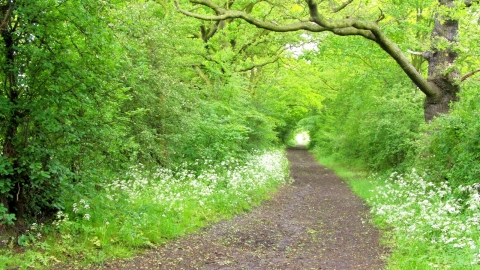
Photo - Andrew Martin
Roding Valley Meadows Nature Reserve
Know before you go
Dogs
Under effective control
When to visit
Opening times
Accessible at all timesBest time to visit
Spring, summer and autumnAbout the reserve
The largest remaining species-rich water meadow in Essex, Roding Valley Meadows is a mosaic of herb-rich meadows, hedgerows, marsh, ponds, scrub and woodland, and is famous for its array of wild flowers. In spring, blooming Devil’s-bit Scabious, Knapweed and Clover transforms the grasslands blue, purple, red and white.
Along the river and throughout the meadows Butterflies, Dragonflies and a wide array of invertebrates can be found soaring over the river and climbing through the grass. Yellow Loosetrife and Water Plantain coat the gentle banks of the river which in Winter can flood and spill out over into the meadow, creating spectacular views out over the reserve.
Many Butterflies, Dragonflies and other invertebrates flourish in the fast-declining habitats that are found on the reserve. In spring and summer, listen out for the calls of Song Thrush, Blackcap and Whitethroat from the hedgerows that interlace the reserve. In late summer flocks of Tits and Finches pass through the reserve, feeding on Thistle and Teasel seed heads, while Kestrels hunt over the grasslands and Kingfishers keeping a close eye over the water.
Species
Contact us
Environmental designation

Did you know?
Roding Valley meadows were declared a local nature reserve in 1986. Before this, from 1938 to 1964, part of this land was occupied by RAF Chigwell - you can still see some of the features of the former site!
These include the balloon rotundas, from which barrage balloons were launched to protect North London against air raids in World War II, and concrete tracks, which now provide firm walking even in winter
Photo - Andrew Martin
History
The meadows were shaped under an ancient system of management, which included grazing and hay cutting. You can walk along the impressive green lane running through the reserve that forms part of the ancient drover’s route from Epping Forest to Romford Market - the reserve would have been a stop off point where animals could feed in the meadows and drink from the river!
Our current management attempts to mimic this historic management by grazing using traditional breeds of cattle and continuing with a summer hay cut
